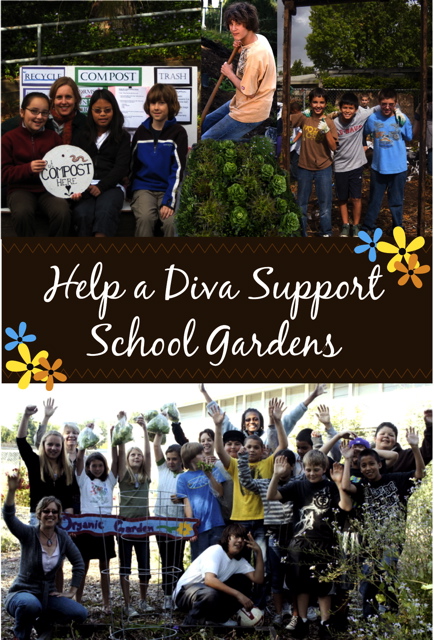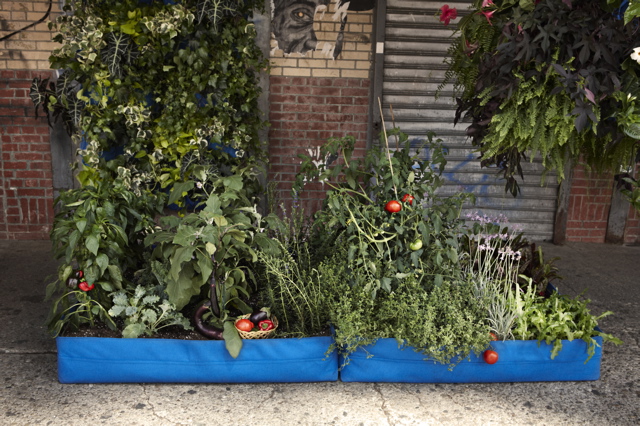 Photo courtesy of www.Woollypockets.com. Grow a garden anywhere with these fabric squares made from recycled plastic bottles!
Photo courtesy of www.Woollypockets.com. Grow a garden anywhere with these fabric squares made from recycled plastic bottles!
1.Grow Your Own
I grew up in NYC in an apartment building, yet somehow I can now grow organic fruits and vegetables. And so can the 6th-graders I work with in school gardens. If we can do it, trust me, ANYONE can! It's not rocket science. All you need is sunshine for six to eight hours a day and healthy soil (full of life-compost). When you grow your own food organically you'll be eliminating pesticides and herbicides that are ubiquitously used in commercially grown food. Visit Pesticide Action Network's www.whatsonmyfood.org to see how many pesticides are used on your supermarket fruits and vegetables. That should scare you into growing your own. Bon appetite!
2.Choose Organic, Non-GMO, Heirloom Seeds
Twelve thousand years ago humans discovered agriculture by doing something as simple as saving seed. In the last century 30,000 vegetable seed varieties have become extinct. Today, there are seeds created in bio-tech labs and patented by multinational corporations who believe they have the right to own agriculture. How come nobody asked us if we wanted our food supply controlled, genetically manipulated, and polluted by a few multinational corporations? That's so rude. Let's bring back the heirlooms. In other words, edible and ornamental seeds that our grandma's planted; Tete Noire cabbage, Flat of Egypt beets, Painted Lady runner beans, Aunt Ruby's German cherry tomatoes, Fig-Leafed Hollyhock, Persian Red Love-in-a-Mist or the smoky, misty pinkish-orange shades of Mother of Pearl poppies. Off to your local nursery you go to request organic, heirloom seeds! (Or purchase online at Baker Creek Seeds, Seed Savers Exchange, Peaceful Valley Farm and Garden Supply, Territorial Seed, and Hudson Valley Seed.)
3.Use Compost and Mulch
Unfortunately many unknowing gardeners feed their plants with a mined, salty, chemical, fast-acting fertilizer that can deplete the soil, burn young seedlings and earthworms to a crisp, and turn your plants into speed-junkies. You don't want hyperactive and sugar-addicted plants. (Aren't hyperactive and sugar-addicted children enough?) Stop being an enabler! It's time to come clean so pack up your dirty gardening chemicals and bring them to your recycling center (or call 1-800-cleanup for a local disposal site). You want to gently bore your plants to tears with a slow-release amendment such as compost. Compost has exactly what plants need: water, air, nutrients, and bulk, the last being something most fertilizers lack. Compost improves your soil texture and structure, supplies and helps retain nutrients, provides moisture and aeration, helps control weeds, and reduces the need to pollute your zip code with chemical fertilizers and pesticides. A 2-inch layer of mulch (wood, bark chips, straw) on top of compost will help deter weed seeds and hold in moisture in the summer while keeping you plants cozy and warm in the winter.
Make your own compost by adding a pile or a compost tumbler or a square framed container to your backyard and filling it with yard waste and food scraps. (For how to start a compost pile, visit here: http://www.learn2grow.com/inspirations/gettingstarted/findingideas/DirtDivaCompost.aspx )
If you are like my sister Sharon, who loves when I bring fresh compost to her yard but doesn't want to have her own compost pile in her backyard, I hereby grant you permission to purchase compost from a local landscape supplier instead. WM Earthcare (Waste Management) in the Bay Area, where I live, is now collecting residential food scraps and yard waste in various cities and turning them into organic compost. They then sell it to the local nurseries, landscape suppliers, vineyards and home gardeners. Garbage never leaves the zip code. It is tumbled and aged to perfection at the local landfill site and then recycled back into the ground from where it started out. Get with the program. There's money to be made in trash!
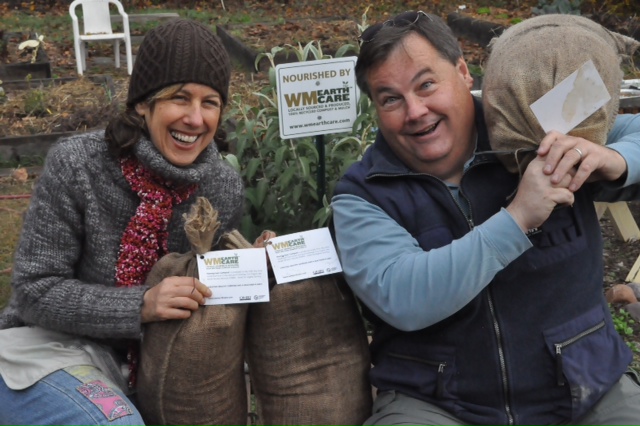 Photo courtesy of Anita Jones.
Photo courtesy of Anita Jones.
Annie Spiegelman and her soil scientist pal, Professor Stephen Andrews. Waste Management Earthcare generously donates truckloads of compost to our school garden projects.
4.Choose Safer Products
A healthy garden is home to a variety of native and flowering plants, which in turn attract a wide variety of beneficial insects who enjoy lunching on the neighborhood pests. How do we invite beneficial insects and a bunch of their friends to come to our homes to eat and hang out like starving teenagers? To start, reduce or eliminate all broad-spectrum pesticides, herbicides, and fungicides. Pesticides eliminate not only the bad insects, but kill the beneficial ones, too. You're now on an endless cycle of wasting money; weakening your plants; killing off the bird, butterfly, and bee populations; depleting your soil; and polluting the neighborhood's groundwater. That's not gardening. That's lunacy. Today there are 16,000 pesticide products registered with the EPA. Besides shoes, do we really need 16,000 of anything? Visit www.ourwaterourworld.org for recommendations on safer products when you have a pest or plant problem in your yard.
5.Choose natives
Once native plants are established they carry on without a chirp. Not one complaint. They just want to hang by your side in your yard and make your life easier. They will help conserve your time, energy, and money. How's that for motivation? Many native plants are drought tolerant as well. Once established, they survive on rainfall and little additional watering in the summer. Most native plants even perform better without fertilizer, and many are pest resistant and rich in nectar so they invite birds, butterflies, and beneficial bugs to your side of town. Most need minimal care and need pruning only once a year, usually in the fall before they go dormant. Native plants essentially take care of themselves. They're not needy. They're laid-back, smart, good-looking, and independent. In other words, they're the perfect date.
6.Learn How to Sheet Mulch
Most avid gardeners amend their vegetable plot in the fall to get it ready for spring. This is usually done by planting cover crops throughout the winter or by sheet mulching: composting with layers. Sheet mulching can also be done over a lawn or a section of a lawn that you want to turn into a Victory Garden (planting edibles and ornamentals). Lose the lawn! Lawns are out. Food is in, baby! To sheet mulch, weed the section you're going to use or mow it down. Next, lay four layers of newspaper on top (black and white only). You could also use one layer of cardboard instead. Cover the newspaper with 2 inches of compost. Then cover it all with 3 to 6 inches of straw or wood chips. This will kill the weeds and grass and rile up the earthworms to get off their behinds and get busy tilling. Water periodically if there's no rain. By late spring or summer, organic matter will be decomposed and ready for you to start planting.
7. Honor thy Honeybee
Though worldwide honeybee health has been on the decline since the 1980s, it wasn't until the fall of 2006 that beekeepers nationwide began noticing honeybee colonies disappearing in large numbers. This syndrome is called Colony Collapse Disorder or CCD. Most entomologists agree that a combination of factors are involved: exposure to pesticides, industrialization, urbanization and disruption of habitat, water pollution, climate change, the Israeli Acute Paralysis Virus, the Varroa mite, and literally trucking bee hives around the world to pollinate crops.
Honeybees (Apis mellifera) are polylectic, which means they feed on just about anything that's blooming. Besides gathering nectar to produce honey, honeybees pollinate home gardens, orchards, wildlife habitat, and especially agricultural crops. We need them if we want to have food in the future so plant flowers that the queen bee and her worker bees like to visit: agastache, borage, bergamot, black-eyed Susan, calendula, California poppy, catnip, coffeeberry, coneflower, coreopsis, cosmos, forget-me-not, lavender, penstemon, rosemary, salvia, sunflower and verbena.
Visit http://www.panna.org/blog/almond-joy-victory-bees to learn more about bees and pesticide poisoning.
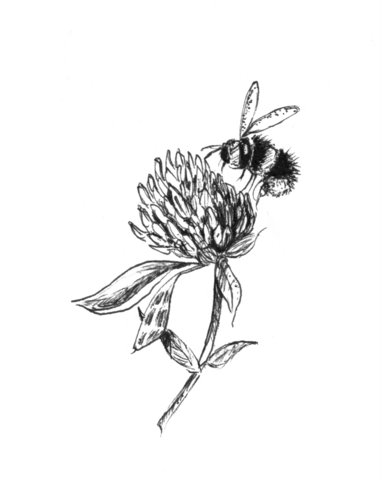
Photo courtesy of Talking Dirt, Penguin Group, Author, Annie Spiegelman
8. Plant cover crops (and no, I don't mean pot.)
Growing cover crops (also called green manure) is the easiest way to add nutrients to your soil while making your garden look prolific and lush instead of fallow and futile during the winter months. Letting my garden rest during the dormant season just doesn't cut it for me. I need to know that everyone around me is multitasking 24/7. Organic farmers grow cover crops in orchards and fields, planting them in the fall, so they nourish the land before they plant their warm season commercial crops.
All cover crop roots are busy exuding essential nutrients, vitamins, minerals, and hormones that provide healthy snacks for earthworms, underground insects, bacteria, and fungi. The organic matter provided when you plow under a cover crop months after planting it, will improve soil structure and aeration, increase water and nutrient-holding capacity, and supply a portion of the nutrient requirements for whatever you're planting next. This way when my garden is dormant throughout the winter, it's actually doing something useful instead of just sitting there complaining, "Why can't we watch TV?" , "I'm cold. I'm bored" and "You said this would be fun."
Cover crops are grown from seed. They're easy to grow and very inexpensive. Some of the most common ones are fava beans, vetch, red clover and oats. Visit www.groworganic.com to order.
9.Volunteer your time to label GMO's
In late February 2012, Californians began collecting the 800,000 signatures required to have the 'California Right to Know Genetically Engineered Food Act' on the November ballot. "As consumers, we have a right to know what goes into the products we purchase and that includes everything we use in our gardens as well as our bodies," says Professor Stephen Andrews, soil scientist at UC Berkeley. "Labels are a powerful information source for consumers. Shouldn't the same hold true for the ingredients that go into your food? Honestly, it's a no brainer! What are these GMO proponents afraid of? If they're so great and wonderful for us to eat, be up front about it and declare your GMO greatness on the label. It's label up, or go crawl back into your plasmid! " Know any Californians? Or people who like to eat? Inform them about this ballot initiative, and you instantly become my stat student.
To learn more about the 2012 California Right to Know Genetically Engineered Food Act visit:http://labelgmos.org
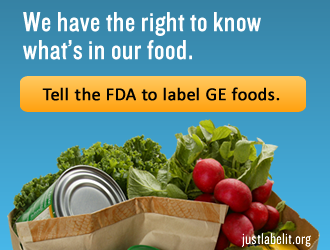
10.Read the latest UN report on feeding the world.
Small-scale farming is the true answer. Even Prince Charles agrees!
His Royal Highness gave a detailed account of the consequences of industrial food production, including soil erosion and limited water supplies, in May 2011. "These are just a few of the enormous ecological and human health costs of a system that depends upon chemical pesticides, fertilizers, and antibiotics to function," said the Prince. "Farming practices that mirror the "miraculous ingenuity of nature" can be just as productive-without the ecological degradation."
He cited a study conducted by the United Nations in 2008 called, the International Assessment of Agricultural Knowledge, Science, and Technology for Development. This report drew on the research of more than 400 scientists worldwide and concluded that "small-scale, family-based farming systems, adopting so-called agro-ecological approaches, were among the most productive systems in developing countries." (http://www.srfood.org/images/stories/pdf/officialreports/20110308_a-hrc-16-49_agroecology_en.pdf)
Send Annie love/hate mail wrapped in English rose petals to www.dirtdiva.com